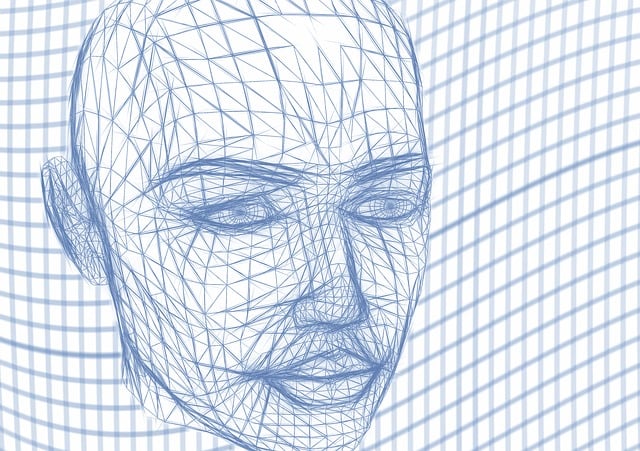 3D scanners are used across a wide range of industries and applications due to their ability to capture the physical dimensions of objects and environments quickly and accurately, enabling their digitization with complex geometry and rich textures in high resolution.3D scanning has been used in manufacturing auto parts , healthcare , and rocketry , but its adoption rate has been slowed by the steep learning curve for professional 3D scanning technologies.This article reveals how advances in Artificial Intelligence (AI) will improve the learning curve for 3D scanning technologies, making the processes as simple as taking a video.
3D scanners are used across a wide range of industries and applications due to their ability to capture the physical dimensions of objects and environments quickly and accurately, enabling their digitization with complex geometry and rich textures in high resolution.3D scanning has been used in manufacturing auto parts , healthcare , and rocketry , but its adoption rate has been slowed by the steep learning curve for professional 3D scanning technologies.This article reveals how advances in Artificial Intelligence (AI) will improve the learning curve for 3D scanning technologies, making the processes as simple as taking a video.
The Market According to Allied Market Research , the global 3D scanning market size was valued at $3.72 billion in 2020 and is projected to reach $16.66 billion by 2030, registering a CAGR of 16.3% from over the period.Modor Intelligence puts the market at $3.1 billion in 2023, growing to $6.23 billion in 2028, a CAGR of 15%.There are 3D applications in nearly every industry; here are just a few examples:
3D scanners are used in industrial design and manufacturing to reverse engineer and develop products, control quality, and for training .
In the automotive industry, 3D scanners can be used for quality control (rapid and precise inspection of components and completed vehicles), as well as design and testing.For example, 3D scanning is used to speed up NASCAR racers and to prototype powertrains .3D scanners are also used to survey land, assess geological structures, and monitor environmental changes.In healthcare, 3D scanners are used to create custom prosthetics, orthopedics, and implants.In construction and architecture, 3D scanners can capture minute details of buildings and construction sites to create virtual models that can aid in planning, design, and renovation.
For example, 3D scanning has been used to create a virtual version of a national treasure in South Korea .3D scanners can be used in the entertainment industry to create digital doubles for movies or games, and in VR and AR applications.
For law enforcement, 3D scanners can be used for crime scene investigation and accident reconstruction .3D Scanning Technologies There are multiple technologies enabling 3D scanning; the first four are considered active 3D capture technologies, and the last is considered passive 3D capture.
Laser triangulation projects a laser beam (either a line or a single point) onto a surface and measures the deformation of the laser ray.
This type of scanning offers high resolution and accuracy, but it is highly sensitive to the subject’s surface; therefore, shiny, transparent, or dark surfaces are problematic.
Structured light scanning measures the deformation of a light pattern when projected onto a surface.This technology does not rely on a laser but rather a projection of a series of linear patterns onto the object.
The deformation of such patterns is used to calculate the distance and the object’s surface.The main advantage of this type of scanning is its speed and resolution; also, non-harmful light can be used, making it practical for body scans.Bright light conditions can, however, negatively impact its accuracy.
Contact-based 3D scanning technology is based on sampling several points on a surface, measured by a mechanical, optical, or physical probe – basically by physical touch.This technology is widely used for quality control because its main advantage is its precision and ability to handle transparent or reflective surfaces, unlike laser triangulation.
Laser pulse scanning is also known as Time of Flight (ToF) or Lidar (in newer iPhones ).The laser beam is projected onto a surface and recollected by a sensor.The time of travel of the laser between its emission and reception gives the surface’s distance and geometrical information to the 3D scanner.Each measure collects only one point, so the scanner must cast its laser 360 degrees around the point, usually done with a mirror that changes the laser’s orientation.The advantage of this technology is its ability to scan very large objects and environments, but it is relatively slow, given its single-point nature.
Photogrammetry , also called “3D scans from photographs,” is considered a passive form of 3D scanning as it reconstructs a subject in 3D from 2D captured photos, using computer vision and computational geometry algorithms.
This type of scanning is gaining traction because it doesn’t require special hardware and can be run using just a smartphone.The idea here is to combine information from a range of photographs of a subject, taken from varying angles.The advantages of this technology are the speed at which scans can be completed, and the ability to capture colors and textures.This technology is particularly useful for large-scale scans, such as landscapes or large structures.
The challenge is that the quality of the scan is dependent on the images captured, and given the enormous amount of data, it can be relatively slow depending on the hardware and software being used.
AI & 3D Tailwinds Artificial Intelligence (AI) advances are expanding the capabilities and improving the ease of use for 3D scanning.AI can help align and merge multiple scans from different angles or sources to create a coherent and consistent digital model.It can also help classify and categorize scanned objects based on user-defined parameters such as shape or color, which could reduce the manual effort required to refine a model.
For example, considerable time and effort are often spent manually cleaning the data to create 3D digital images.After the 3D scanning data is collected into a “point cloud,” composed of millions of different data modules that may include color, texture, and intricate surface details.
A point cloud that would take a person an hour to clean could be addressed in less than a second by AI.
Soon, 3D scanners will be able to learn about and understand the objects they are scanning, allowing them to evaluate objects and provide more precise quality control.For example, a 3D scanner could assess the surface of a commercial plane, identifying areas that need immediate attention and those that can be addressed later, or as another example, it could be used to assess the structural integrity of buildings after an earthquake.
Leading 3D Scanning Companies 3D Systems ( DDD ) is a pioneer in 3D printing and offers 3D scanning solutions for product design, prototyping, and manufacturing.In 2021, the company acquired Oqton, whose cloud-based, AI-enabled Manufacturing Operating System is used to accelerate the deployment and automation of digital manufacturing in production environments.
Autodesk ( ADSK ) is a software company serving industries in architecture, engineering and construction, product design and manufacturing, and media and entertainment.Autodesk software enables the design, modeling, and rendering needs of these industries.Its solutions include 3D scanning software and services .
Faro Technologies ( FARO ) specializes in 3D measurement, imaging, and realization technology.It is known for its advanced 3D scanning equipment used in various industries, including manufacturing, construction, engineering, and public safety.Earlier this year, the company announced the release of Hybrid Reality Capture, which combines the accuracy of a static 3D laser scanner with the speed of a panoramic camera.This combination of fast scans with colorized 360° images improves scanning speed by up to 100%.
Hexagon AB ( HXGBF ) provides high-precision 3D scanners suitable for industrial and engineering applications.
The company’s unique portfolio of digital reality solutions combines its sensor, software, and autonomous technologies.Its subsidiary, Leica Geosystems, is a leading provider of premium spatial measurement solutions, including 3D laser scanners for surveying and construction.
NVIDIA’s ( NVDA ) Jetson mini supercomputer will help scanners understand and assess what they are scanning.
This will expand the utility of 3D scanning beyond creating digital replicas and into functions such as quality control.Lumirithmic, an Imperial College London spin-out, has developed proprietary technology that enables users to easily create movie-grade avatars from facial scans, and enables 3D scanning at scale for any industry.
Trimble ( TRMB ) offers 3D scanning solutions primarily focused on applications in construction, agriculture, transportation, and geospatial sectors.The company’s Trimble Business Center (TBC) software uses AI to mimic human cognitive functions, such as classifying point clouds into buildings, vegetation (high and medium), poles, signs, ground, noise (people and vehicles), steps, power lines, and dividers.
Topcon Corporation ( TOPCF ) provides surveying, construction, agriculture, and infrastructure management solutions, including 3D laser scanners and total stations.
Privately-held Artec 3D is known for its handheld 3D scanners, which are widely used in healthcare, industrial design, and media and entertainment.
Privately-held Creaform provides portable 3D measurement technologies and is known for its handheld 3D scanners used in industrial, educational, and research settings.
The views and opinions expressed herein are the views and opinions of the author and do not necessarily reflect those of Nasdaq, Inc..
